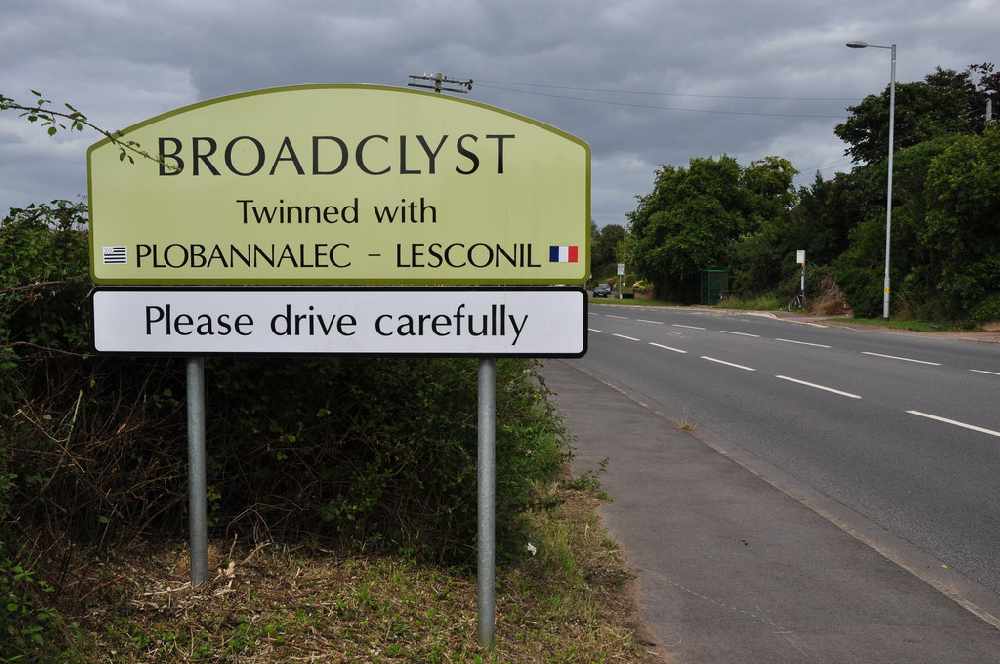
5,000 new homes planned for parish of 3,000 souls
Just on the edge of Exeter, the landscape of the parish of Broadclyst is changing forever - with settlements around the main village about to get bigger. High density, new homes are on their way. The natives are restless - and have a plan.
The parish of Broadclyst – consisting of Broadclyst village with smaller settlements at Westclyst, Budlake and Beare along the B3181, Columbjohn and Westwood in the rural north, and settlements at Broadclyst Station and Blackhorse along on the old A30 – had a population of 2,962 at the time of the 2011 Census.
While historically the main settlement and largest population was the village of Broadclyst, both Westclyst and Tithebarn will be larger in the near future.
The population is estimated to have increased by two thirds by 2021. With 4,050 new houses planned across at West Clyst, and Tithebarn (the latter in Cranbrook), it will result in a large population influx.
It is the biggest parish and the fastest growing parish in East Devon. Now the parish has produced a draft Neighbourhood Plan which is currently out for consultation.
It says: “The parish council and community have no legislative power to stop or even negotiate development other than by responding to planning applications as a consultee. This is frustrating, especially when the concerns we raised at planning stage have being retrospectively been recognised and altered.
“But the neighbourhood plan changes the community’s position from reactive to proactive, creating a plan for the parish; a clear mandate from the community; a proactive way to move forward. Without it, the parish remains at the mercy of the district council’s decisions who do not necessarily address local needs.
“Unlike national and district planning frameworks, it is “community-led” which puts the community, in the driving seat when it comes to having a say over what, how and where development should take place. This neighbourhood plan is the community’s plan for Broadclyst Parish. It represents the community’s vision and priorities for how they would like to see the local area change in the coming years.”
THE PARISH
The parish of Broadclyst is located around 3km (1.5 miles) to the north east of Exeter. The western boundary lies next to Pinhoe while the south east boundary abuts Cranbrook. There is coalescence between the Parish and Exeter, making it difficult to known where one boundary stops and the other starts.
It is the biggest parish in East Devon and is the biggest growing parish in East Devon with the population estimated to have increased by two thirds since 2011. It has an attractive rural setting and landscape character with the majority of the land belonging to the Killerton Estate owned and run by the National Trust.
The Killerton Estate houses are clearly identified throughout the parish due to the recognizable cream limewash / cream and brown sepia in combination with red brick, tile and local sandstone.
Historically the main settlement in the Parish was Broadclyst village with smaller settlements at Westclyst Budlake and Beare along the B3181. In the rural area lie the settlements of Columbjohn and Westwood. There are two further settlements at Broadclyst Station and Blackhorse both of which are in the south of the Parish lying close to the old A 30 road to London. But new major strategic development at East Devon’s West End has and will continue until completion, to dramatically change the natural environment of this area of the parish.
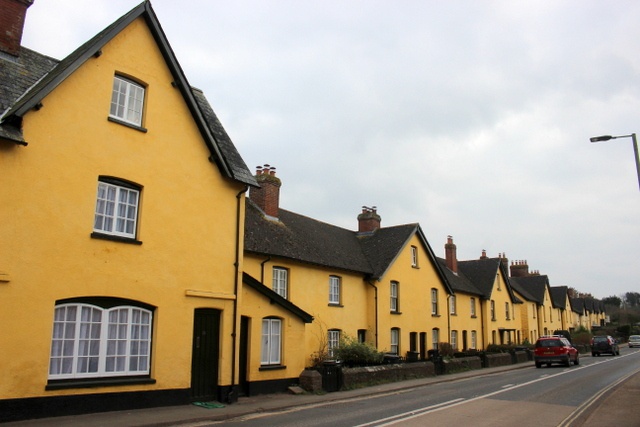
Broadclyst houses (courtesy: Nigel Mykura/Geograph/LDRS)
HOUSING
Strategic development sites, which are already allocated for development and not subject to the Neighbourhood Plan, will bring new houses. This will see the biggest centre of population move from Broadclyst village to two new settlements of Westclyst and Tithebarn.
At Westclyst, 430 homes at Pinn Court Farm are allocated for development, with 1,000 at Old Farm Park, 80 at Taveners Field, at 35 at Moonhill Copse, with the Tithebarn Green/Mosshayne site allocated for 1,500 homes.
However, the neighbourhood plan allocates several smaller sites too. One at Blackhorse Gardens in Blackhorse is allocated for homes, land at Broadclyst station for 24 homes, of which 12 will be affordable houses and five self-build plots, and a children’s play park, and provision of land for a 5m pedestrian and cycle lane for the Cranbrook to Exeter Cycle route..
Land on the edge of Broadclyst village is allocated for a small scale development to include the following: 16 houses, while further land allocated to provide a new residential development for the Killerton Estate to 20 homes.
Proposals for new dwellings on allocated sites in the Neighbourhood Plan will be required to provide: 50 per cent affordable housing for those with a local connection.
Proposals for the renewable energy systems of micro hydroelectricity, solar farms and ground Source and Air Source Heating will be supported.

ECONOMIC DEVELOPMENT
Broadclyst parish is a commuter settlement for Exeter with commuting by car being the predominant travel choice, but this choice has resulted in road capacity and safety issues, and with the construction of 5,000 new houses, the existing road networks are struggling to cope with movements in and out of Exeter and north to south across the parish.
The plan provides support for less commuting to work and to provide more employment within the parish, and for regeneration of sites for business or mixed development and support for new business provision across the parish, for work hubs and work live units, for food/ drink production businesses, an increase in provision of holiday accommodation and an increase of tourism related businesses.
The Beare Farm site is allocated to be regenerated to provide flexible commercial space for offices, food and/ or drink production, and small light industrial workshops, but proposals for Class B2 and B8 industrial uses will not be supported.
A site at Crannaford is allocated to be regenerated through refurbishment and selective development to provide flexible commercial space for light industrial, and garden centre including a café, a children’s play park and café; and a nursery day care centre.
The Winter Gardens site to be regenerated to provide flexible commercial space for offices and light industrial use.
Land at the Silverton Mill site is to be regenerated to provide a mixed use development for the Killerton Estate. It will include 25 new dwellings, a car park for access to Ellerhayes Bridge, areas for water activities and recreation uses, a café and retail units, a visitor centre, car parking and up to 2000m2 of employment space.
And an area of Elbury Farm is to be regenerated to provide a new mixed development for the Killerton Estate. This would include 10 new dwellings and the conversions of existing brick buildings to provide residential accommodation, a Nature Reserve visitor reception and facilities, and the demolition of agricultural buildings will facilitate a car park for visitors and residents and business units.
TOURISM
Broadclyst is a popular destination attracting around 300,000 visitors a year, with the main attraction being is the Killerton Estate owned by the National Trust.
Ashclyst Forest and Danes Wood, both on the Killerton Estate, are also popular, with Ashclyst is one of the largest woods and a known haven for butterflies, bluebells and birds, with waymarked trails for exploring the wood and surrounding countryside.
The plan says that visitor accommodation is very limited and does not cater for all sectors of the holiday market, as there are no public camping and caravan sites, no hotels, but there are very few bed and breakfast establishments, Airbnb and selfcatering holiday cottages, with the total accommodation provision is of eight to 12 properties.
The plans says: “The community recognises the contribution tourism makes to the local economy and is keen to promote an increase in visitor numbers and accommodation particularly outside the main holiday season but reflects that growth must be balanced against protection of the very features and attractions which appeal to visitors.”
Development of sustainable tourism in the parish will be welcomed and supported throughout the parish including provision of sustainable tourism promoting visitors’ enjoyment and understanding of zero carbon living, nature recovery, high quality local food and drink and local character, history and custom
New small-scale low-impact high-quality built holiday accommodation will be supported but proposals will need to demonstrate that such uses are in character in landscape, heritage and design terms and do not adversely impact the setting. New holiday accommodation will be approved subject to the following condition in order to ensure the accommodation remains in holiday use and prevents its use for residential purposes or second home ownership.
Applications for the development of sustainable tourism- related camp sites would be welcomed & supported by the parish, particularly if they are sympathetic to the surrounding countryside, the plan says, adding: “Development proposals for the use of land for small-scale sustainable high-quality touring caravanning and /or camping sites offering a range of styles, types and qualities of camping (to include Yurts & Shepherd Huts, Pods & Lodges) will be supported.”
INFRASTRUCTURE
The Broadclyst Neighbourhood Plan supports the development of a route providing safe and direct access for pedestrians and cyclists between Broadclyst village and Broadclyst station to help people get to and from Clyst Vale Community College, Broadclyst Primary school, Killerton House, and Ashclyst Forest and to facilitate residents of Broadclyst Village travelling southwards to Cranbrook. A bridge over the Waterloo to Exeter railway line is also supported.
Station Road is the most direct route from Broadclyst village, to Broadclyst Station and onwards to the A30. With the Build out of Cranbrook Blue Hayes phase this will be an even busier route and this route is unsafe for pedestrians and cyclists, the Plan says, adding: “To minimise the impact of the Cranbrook Western traffic and to satisfy the community’s evidenced aspiration, a bridge over the railway is supported.”
SPORTS HUB
The plan allocates land for a new sports community hub with an all-weather pitch floodlight facility and community building, which follows support from the local community. As well as the all-weather pitch, it would include a large community room, a café/ social area, a gym/ fitness facility, meeting rooms for commercial use, a crèche, office space, and changing rooms and toilets.
The plan says that 84 per cent of the community supported a Community Sports Hub facility being allocated at a site adjacent to Clyst Vale Community College with the backup site being at Brockhill if the preferred site cannot be developed.
Proposals for new, indoor and outdoor sport and recreation facilities in suitable locations served by a choice of sustainable travel options, which meet specific identified community needs will be supported, the plan adds.
Proposals for the development of a community swimming pool and/ or proposals for the provision of a swimming pool as part of a tourist facility which provides community access are supported.
The Broadclyst Neighbourhood Plan says that it wants to promote economic development across the parish and to provide new economic sites and mixed development sites across the parish and to support specific economic growth and opportunities.
- To provide a new Community Sports Hub.
- To maintain and improve existing community facilities.
- To provide additional community spaces for Sports, Leisure and Recreation. To secure high quality development which addresses the challenges of climate change.
- To integrate the built and natural environment.
- To protect historic structures, landscapes and buildings which determine the heritage character of settlements and landscapes within the Parish.
- To expand and diversify economic development and activity within the Parish.
- To regenerate brownfield sites within the Parish. To provide housing to meet local needs.
- To increase accessibility and affordability of housing for local people.
- To increase provision of self-build and live-work units
- To enhance the movement of people and traffic in and across the Parish.
- To increase infrastructure and provision for sustainable modes of travel.
- To protect and enhance the natural environment and diverse habitats of the Parish.
- To protect and enhance the landscape setting of the Parish.
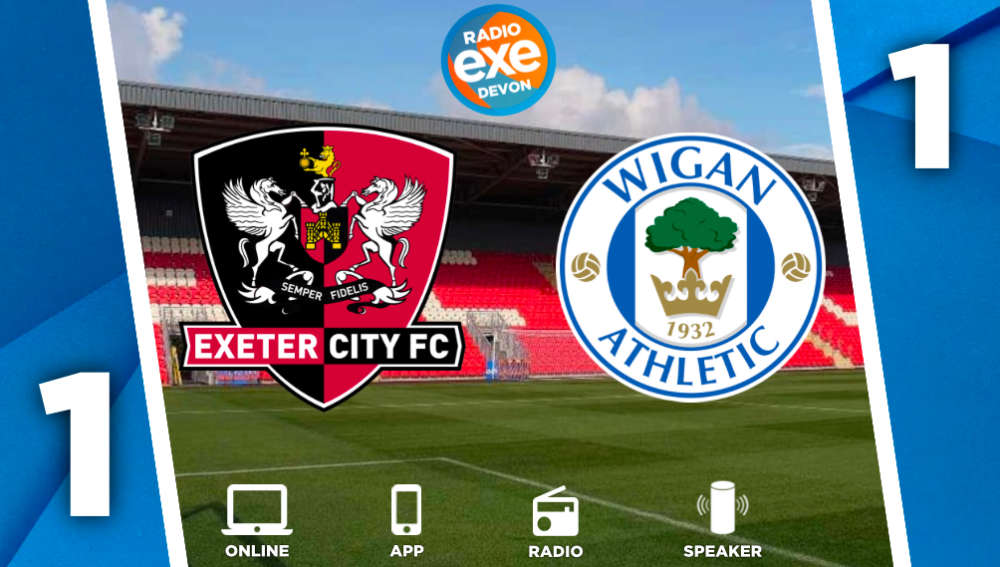 City draw at home
City draw at home
 Cars damaged in bid to buy cheaper
Cars damaged in bid to buy cheaper
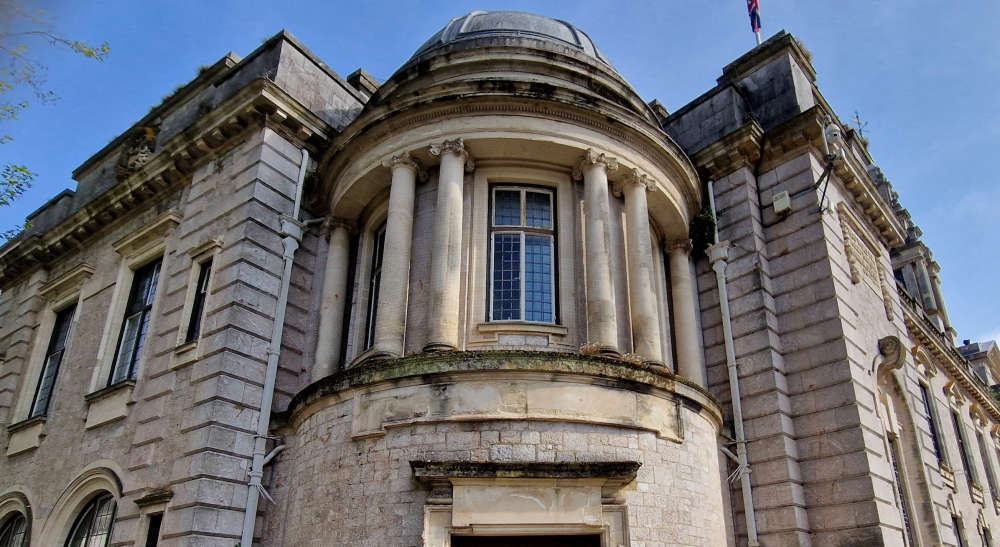 Torbay Council considers 'fire and re-hire' in pensions wrangle
Torbay Council considers 'fire and re-hire' in pensions wrangle
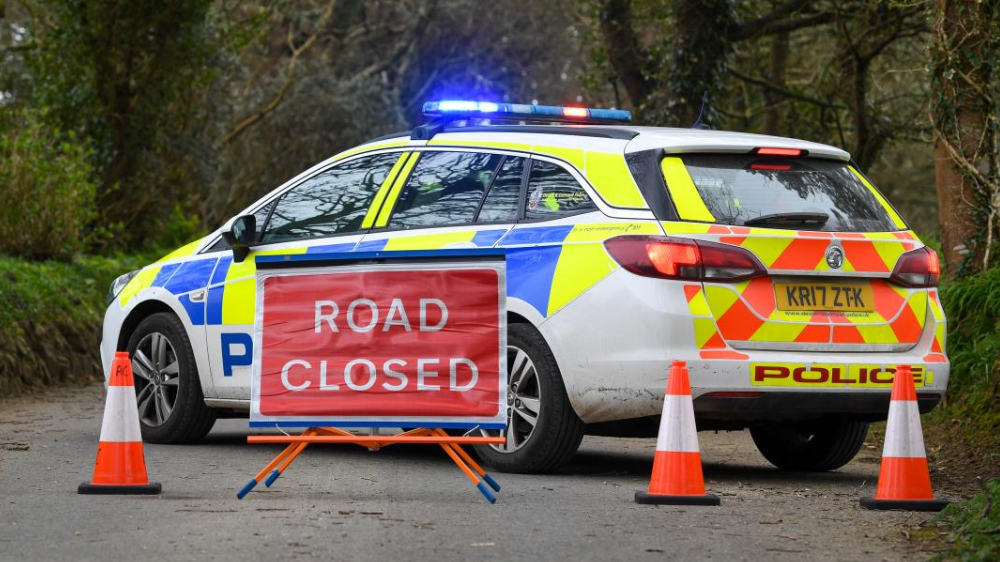 Elderly pedestrian hit by car in Paignton crash
Elderly pedestrian hit by car in Paignton crash
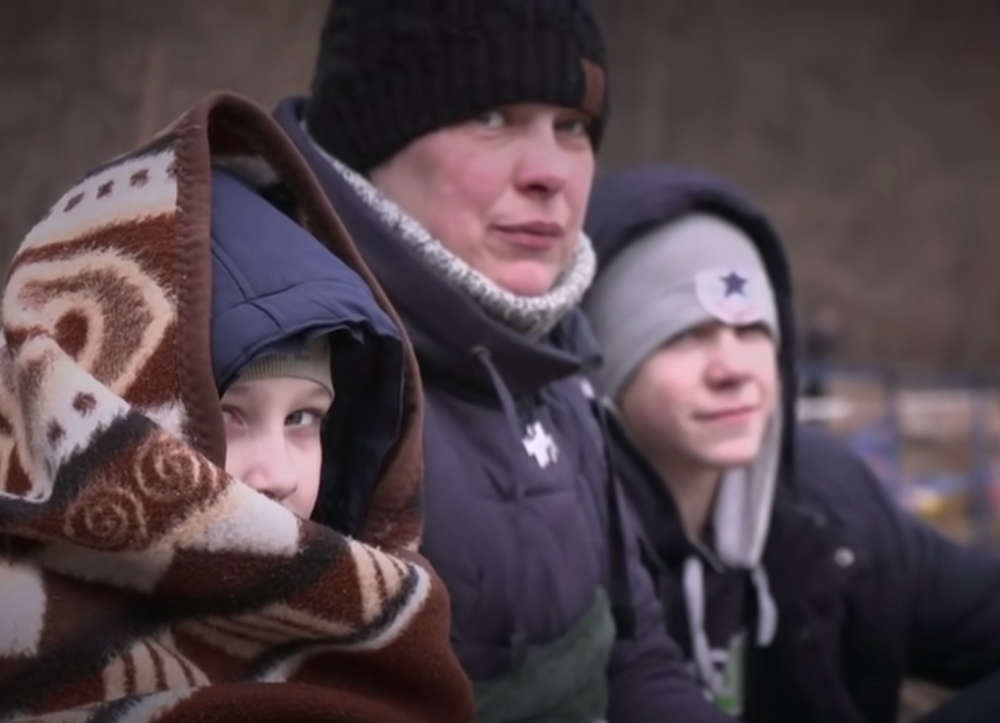 Top up payments for Ukrainian hosts in North Devon
Top up payments for Ukrainian hosts in North Devon
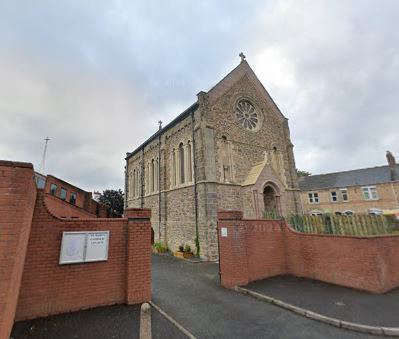 Plans submitted to join two catholic churches in Barnstaple
Plans submitted to join two catholic churches in Barnstaple
